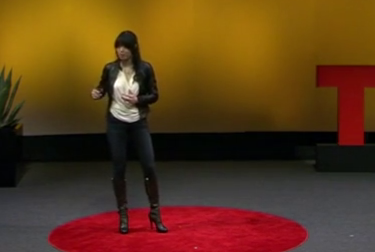So we have gone through almost 30 characters.
我們已經學了差不多三十個漢字,
By using this method, the first eight radicals will allow you to build 32.
通過這個方法,這八個基本字可以衍生出三十二個漢字,
The next group of eight characters will build an extra 32.
下一組的八個漢字又會衍生出另外32個漢字。
So with very little effort, you will be able to learn a couple hundred characters,
所以,大家很輕松地就可學到幾百個漢字,
which is the same as a Chinese eight-year-old.
這相當于八歲中國孩子的漢語程度。
So after we know the characters, we start building phrases.
在學過了這些字后,我們開始學習造詞組。
For example, the mountain and the fire together, we have fire mountain. It's a volcano.
比如,把“山”和“火”放在一起,我們有“火山”。這是“火山”。
We know Japan is the land of the rising sun.
我們知道日本是太陽升起的地方。

This is a sun placed with the origin, because Japan lies to the east of China.
這里把太陽和原點放在一起,因為日本位于中國的東面。
So a sun, origin together, we build Japan.
所以把太陽和原點放在一起,就是“日本”。
A person behind Japan, what do we get? A Japanese person.
在“日本”后面加個“人”,我們得到什么?“日本人”。
The character on the left is two mountains stacked on top of each other.
左邊的字有兩座山,上下疊在一起。
In ancient China, that means in exile,
在古代中國,這意味著流亡,
because Chinese emperors, they put their political enemies in exile beyond mountains.
因為中國的皇帝把政敵流放到大山之外。
Nowadays, exile has turned into getting out.
現今,“流放”變成了“走出去”。
A mouth which tells you where to get out is an exit.
一個“口”字告訴你從哪里出去,就是“出口”。
This is a slide to remind me that I should stop talking and get off of the stage. Thank you.
這張幻燈片提醒我,該結束演講了,并走下臺。謝謝。











